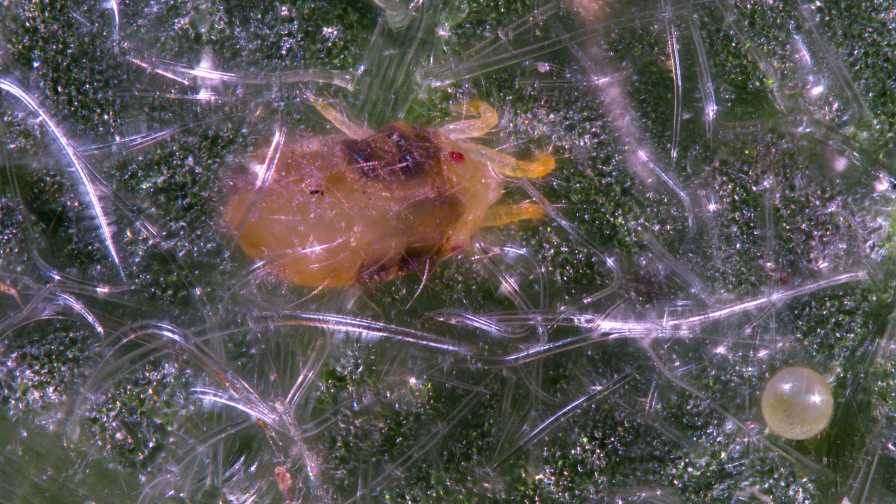Tips and Tricks for Scouting for Pests in Cannabis
 Every grower has to deal with pests. Even in the greenhouse, pests can make their way inside and find the controlled environment comfortable.
Every grower has to deal with pests. Even in the greenhouse, pests can make their way inside and find the controlled environment comfortable.
One of the most significant pests cannabis growers must deal with is spider mites. We reached out to Michael Sassano, CEO and Founder of Somai Pharmaceuticals, to discuss how his company handles management of spider mites and other pests for cannabis.
GG: When it comes to growing cannabis in the greenhouse, what are your protocols for scouting, monitoring, and identifying a pest?
Sassano: Integrated pest management (IPM) is one of the most important aspects of growing. Armed with bug tape, microscopes, and daily visual inspections of plants, we can monitor the bug population in our greenhouses. Knowing what you’re up against during the various seasons allows you to stay ahead of the curve even when you don’t see bugs, but we know they are there, and keeping the populations suppressed is the key.
GG: How successful has your pest management been?
Sassano: You have no choice but to be successful. Of course, some days are better than others. Balancing expenses and personnel time is always the chore when combating pests.
GG: Are there any stories of when a pest got into your facility that you had to control?
Sassano: Once, someone came running and said they found a web of a rust mite. The entire facility went code red. It was like yelling fire in a crowded building. It turned out to be a normal spider, but it just goes to show the seriousness of some pests.
GG: What tips and tricks would you give to other growers when they are scouting?
Sassano: Look closely at the soil around the base and randomly pull a plant out of the pot and check the root structure. Set up a text chain so that any worker can take a picture and send it if they see something. All growers can be involved in the process, and [having] more eyes is the best practice. We keep pictures of all bugs and how the plant will look if infected posted at work areas. Identifying a potential threat is the job.
GG: What pests right now are of the most concern in the cannabis market? Have you run into them or know someone who has? What makes this pest so bad?
Sassano: We deal with all sorts depending on the region. In Las Vegas, aphids and thrip are the most common issues. Other places have mites and caterpillars. Everyone has faced local pests, from small-scale sightings to full outbreaks. This is growing. Some are extremely hard to suppress and will destroy your crops—others you just keep hitting them. Aphids, for example, will grow at the root level and are born ready to reproduce. Every three days, they make millions of new babies and fly as adults. This becomes complex as you have to treat the soil and treat the plant over and over to reduce the population.
GG: What tools have you found to be useful when scouting and monitoring crops? What has made that tool so useful at your operation?
Sassano: Beneficials are the best way to treat pests, but are also very costly. Spraying and drenches are also very common. Mixing beneficials and sprays is complicated and requires true knowledge of IPM best practices. The beauty of beneficials is they can burrow into the soil, fly around the plants, and they can eat, paralyze, or infect the target bugs. They can be very precise. Wheraas drenches and sprays are like dropping a bomb, very effective to take out large areas, but some are missed. Additionally, you must be careful of the plant cycle and use specific sprays and drenches during specific phases.









